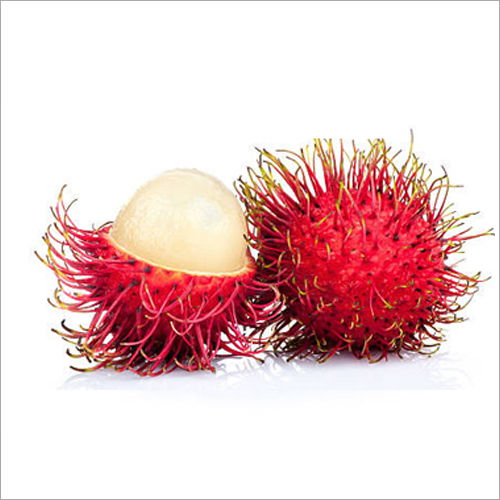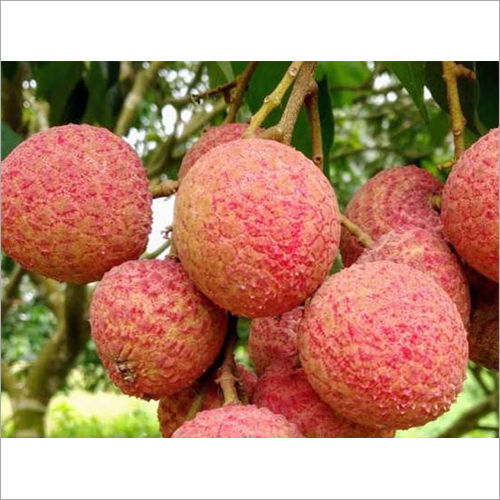Call: 08045479181
Rambutan Plant
Price 400 INR/ Piece
MOQ : 100 Pieces
Rambutan Plant Specification
- Type
- Plant
- Variety
- Rambutan
- Breed
- Hybrid
- Part
- Leaves
- Color
- Green
- Size
- Medium
- Stem length
- 15-30 cm
- Shelf Life
- Up to 12 Months
Rambutan Plant Trade Information
- Minimum Order Quantity
- 100 Pieces
- Payment Terms
- Cash in Advance (CID)
- Supply Ability
- 10000 Pieces Per Month
- Delivery Time
- 7 Days
- Main Domestic Market
- All India
About Rambutan Plant
Rambutan Plant is small, oval to round fruits, averaging 3 to 5 centimeters in diameter and grow in loose, hanging clusters of 10 to 20 fruits. The fruits are enveloped in a semi-thick, firm and leathery rind, covered in soft, spine-like protrusions known as spinterns. Underneath the rind, the flesh varies from white, translucent, to pale pink and is succulent and slightly chewy, encasing a central, oblong, light brown seed wrapped in thin and papery layers. Rambutan Plant fruits are aromatic and have a sweet fruity flavour with mild acidity, containing subtle notes of strawberries and grapes.
Growth Requirements and Adaptability
Rambutan plants are well-suited for regions with temperatures between 25C and 35C. They exhibit rapid growth when planted in loamy, well-drained soils and require consistent high moisture levels. Full sun exposure is essential for healthy development and fruit production. Their moderate disease resistance makes them a reliable option for gardeners and commercial cultivators, especially in India.
Fruiting and Maintenance
Typically, the Rambutan plant matures and begins bearing fruit within 23 years, thanks to the grafted propagation method. Regular watering and care are crucial throughout its lifespan. Its fruit boasts a shelf life of up to 12 months, providing extended usage opportunities. Routine care ensures both ornamental beauty and substantial fruit yields.
Versatility in Usage
Beyond its value as a fruit crop, the Rambutan plant adds ornamental appeal to gardens and landscapes. Its lush green foliage and medium size enhance aesthetic charm, while its nutritious fruit offers commercial and home-growing benefits. Reliable for both small-scale and large-scale cultivation, this hybrid provides flexibility for various market needs.
FAQs of Rambutan Plant:
Q: How should I plant and care for a Rambutan plant in India?
A: Plant Rambutan in well-drained, loamy soil under full sunlight. Ensure the plant receives ample water, as it has high water requirements, especially during dry periods. Regularly monitor for pests and diseases to maintain its moderate disease resistance, and provide protection from cold snaps below 25C.Q: What is the usual age for a Rambutan plant to start fruiting?
A: Grafted Rambutan plants typically begin fruiting within 23 years after planting, provided their needs for full sun, water, and nutrient-rich soil are met.Q: When is the best time to propagate Rambutan plants?
A: The ideal period for propagating Rambutan is at the onset of the rainy season. This ensures high humidity, which aids root development in grafted cuttings.Q: Where is the Rambutan plant most successfully cultivated in India?
A: Rambutan thrives across subtropical regions of India, where temperatures stay between 25C and 35C and the soil remains loamy and well-drained. Southern and coastal regions are especially favorable.Q: What are the main benefits of growing Rambutan plants?
A: Rambutan offers both ornamental and commercial fruiting advantages. The plant adds aesthetic value to landscapes while delivering nutrient-rich fruits with a long shelf life, benefiting home gardeners and commercial growers alike.Q: How do I use Rambutan fruits post-harvest?
A: Rambutan fruits can be consumed fresh, added to desserts, or processed into jams. Thanks to their up-to-12-month shelf life, they can also be stored or transported for commercial sale.
Tell us about your requirement

Price:
Quantity
Select Unit
- 50
- 100
- 200
- 250
- 500
- 1000+
Additional detail
Mobile number
Email
More Products in Fruit Plants Category
Chinese Litchi Plant
Price 350 INR / Piece
Minimum Order Quantity : 100 Pieces
Part : Leaves
Color : Green
Shelf Life : Up to 2 Years (as a live plant)
Breed : Hybrid
Red Diamond Guava Plant
Price 150 INR / Piece
Minimum Order Quantity : 100 Pieces
Part : Leaves
Color : Green
Shelf Life : 1224 Months
Breed : Hybrid
Star Fruit Plant
Price 100 INR / Piece
Minimum Order Quantity : 100 Pieces
Part : Leaves
Color : Green
Shelf Life : Up to 7 days (fruit)
Breed : Carambola
Red Guava Plant
Price 30 INR / Piece
Minimum Order Quantity : 100 Pieces
Part : Leaves
Color : Green
Shelf Life : Upto 15 Years (as plant)
Breed : Hybrid
 Send Inquiry
Send Inquiry Send Inquiry
Send Inquiry




